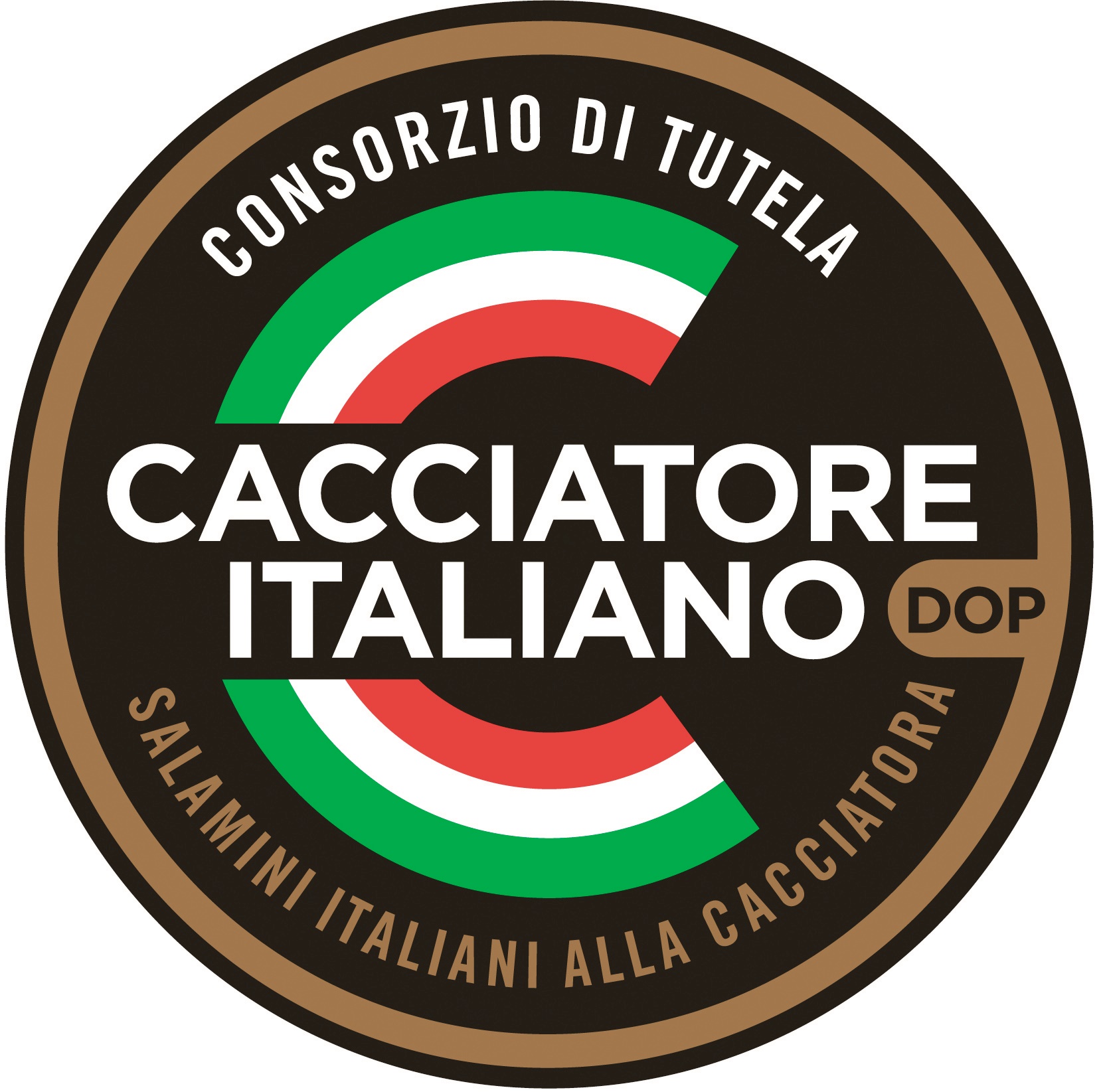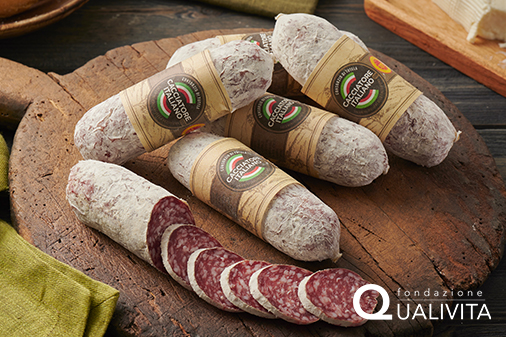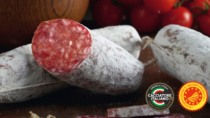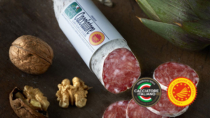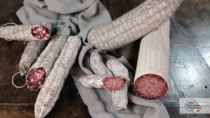Description
Salamini Italiani alla Cacciatora PDO are raw, cured and stuffed charcuterie products obtained from lean pork and pork fat of pigs belonging to the Large White, Italian Landrace and Duroc breeds, or other similar breeds compatible with the Italian heavy pig.
Production Area
The production area of Salamini Italiani alla Cacciatora PDO is within the entire territory of the Friuli Venezia Giulia, Veneto, Lombardy, Piedmont, Emilia-Romagna, Umbria, Tuscany, The Marches, Abruzzo, Lazio and Molise regions. The pigs used for production must be born, reared and slaughtered in the above-mentioned regions.
Production Method
The fatty and muscular parts are carefully cleaned in order to remove the larger sinews and soft fatty tissue. The clean cuts are then refrigerated in cells at a maximum temperature of 7°C. Mincing must be carried out in mincers that have moulds with holes of between 3-8 mm. The mince is then kneaded together with salt and pepper (whole or ground) and garlic, in vacuum or air pressure machines. The mixture is inserted into natural or artificial casings with a maximum diameter of 75 mm, and sometimes the salamis are tied together. The small salamis are heat dried at a temperature of 18-25°C, in order for the superficial parts to dehydrate rapidly in the first few days; however, techniques involving accelerated fermentation cannot be used. The curing process lasts for at least 10 days, in locations where there is a sufficient exchange of air and a temperature between 10 and 15°C.
Appearance and Flavour
Salamini Italiani alla Cacciatora PDO have a compact cylindrical shape, a maximum diameter of 6 cm, a length of up to 20 cm and a weight of less than 350 g. They have a compact, not springy consistency; the slice is compact and homogenous with a rich ruby-red colour and evenly distributed specks of fat. The flavour is sweet and delicate, never sour. The aroma also is also delicate and characteristic.
History
The origins of Salamini Italiani alla Cacciatora PDO date back to the period of the Longobard invasions. In fact, during their migration, the barbaric populations had to eat food that could be preserved for a long time, a great part of which was pork-based. Therefore, the production of salamini began in the hilly area of Lombardy, later spreading into the confining regions of Northern Italy. Later, the hunters’ custom of taking this food product with them when they went hunting, was what determined the name with which they are known today (cacciatore means hunter), as well as the small size, which made them easier to carry.
Gastronomy
Salamini Italiani alla Cacciatora PDO should be stored in a dry, well-ventilated place, or in the refrigerator. Their small size makes them an ideal fresh product for today’s habit of eating “on the go”. Traditionally they are served as a starter, usually with other charcuterie products, cheeses and products preserved in oil. They can also be used in lavish salads: in strips, sliced or diced, with apple and pomegranate, or with lentils, tomato and olives, dressed with balsamic vinegar. On the contrary to other similar products, Salamini Italiani alla Cacciatora PDO are best served in very thin slices. They are best paired with red wine.
Marketing
The product is marketed as Salamini Italiani alla Cacciatora PDO. They are sold unpackaged, in modified atmosphere packaging, whole, in pieces or sliced.
Distinctive Features
The characteristic that most distinguishes Salamini Italiani alla Cacciatora PDO is its size, which is much smaller in respect to other salami, making it practical and simple to eat.



